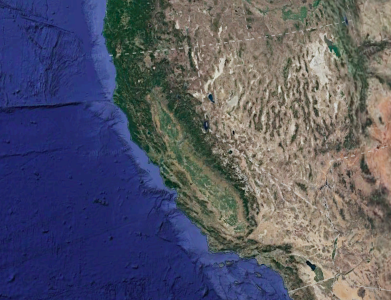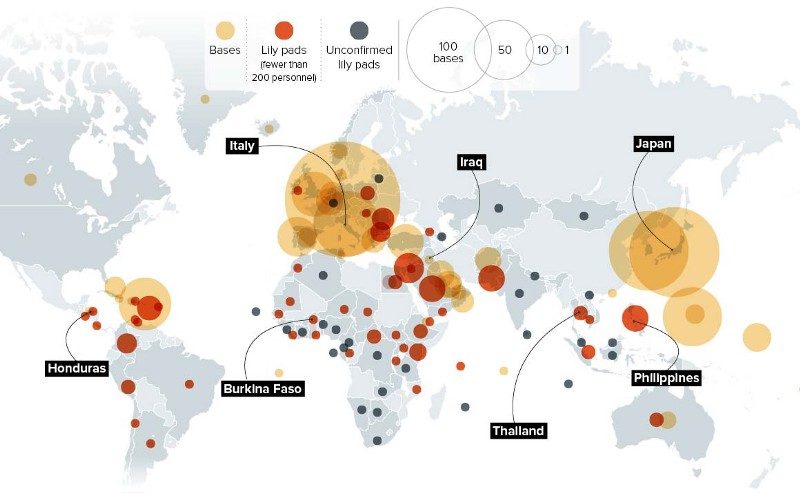California could defend itself for a fraction of the cost
Some of the most common questions people have about California independence concern the military. Wouldn’t there be a Civil War? Can we afford our own military? Wouldn’t we get invaded by Mexico?
These questions may be rooted more in fear than facts, but they do have answers. Here is what we know:
- California is not going to fight a war of independence with the U.S. If California becomes a country, it will be after a negotiated treaty or because the U.S. collapses and ceases to exist.
- Any independence negotiation between California and the U.S. would almost certainly result in a comprehensive security and status-of-forces agreement, similar to those the U.S. have with Japan and Germany.
- If California had to be 100% responsible for our own military defense, which we believe to be unlikely, we are uniquely well-prepared to defend ourselves, at a much lower cost.
The U.S. military isn’t going to leave out of spite
Some appear to assume that if California gained independence, the obvious result is that the U.S. military would just pull out, taking all their personnel, infrastructure, experience, and equipment with them. This assumption leads to a fear that California would need to rebuild from scratch.
But this underlying assumption makes no sense and ignores historical precedent.
First, the U.S. cannot realistically leave a country on its own western border suddenly undefended, just to spite the people who live there. Only 250 miles would separate the U.S. from the coast, where the coastline is more than 800 miles long. It would present an unacceptable defense risk to the U.S. If an enemy invaded California, what would keep them out of Oregon, Nevada, or Arizona?
Second, The U.S. only rarely pulls out of countries where it has a military presence. For example, the U.S. has some military presence in all but one of the 54 African countries, and an estimated 800 bases in 70 countries around the world.
If California has an amicable breakup with the United States, that will almost certainly result in a comprehensive security treaty and status-of-forces agreement, placing California in a position similar to Japan and Germany.
A Status of Forces Agreement is an international treaty that determines the terms and conditions under which a foreign government (i.e., the U.S.) may operate a military base in the host country (i.e. California) and permits certain rights and privileges to the U.S. military personnel stationed there. Such agreements are entered into as part of a larger, mutually beneficially, comprehensive security plan, based on the premise that the countries share mutual defense interests and that an attack on the host country would endanger the security of U.S. as well. As is typical in such treaties, it would involve a U.S. commitment to defend California in the event of an attack, while also providing ancillary benefits such as deterring attacks and limiting the costs associated with supporting an unaided, entirely independent military.
An Independent California may be at a lower risk of a foreign attack than the United States
The sheer volume of foreign investment in California makes it an undesirable target of war. In 2016, 28% of all foreign direct investment in the United States was in California, totaling more than $119 billion, much of it coming from the United Kingdom, Germany, and Japan. In that same year, California was also the number one recipient of direct investment from China with more than $16 billion.
In addition, while entirely speculative, it is possible that California would also be at a lower risk of an attack after separation from the United States, who have been and may yet still become a target in retaliation for CIA atrocities committed abroad.
If necessary, California is uniquely qualified to provide for its own defense for several reasons
California’s unique geography makes it one of the most naturally defensible places in North America

Why is the center of U.S. Naval operations in San Diego? Because of the deepwater port, a practical necessity for a successful naval defense. California has several deepwater ports up and down its coast, including the Port of San Diego, Port Hueneme, the Port of Oakland, and the Port of Humboldt.
Almost all of California’s borders are either mountainous, desert or both, from the vast Mojave desert in the southwest, to the high Sierra Nevada in the east, to the rugged Cascade Range in the north. To California’s West is, of course, the world’s most vast ocean, and even our Western border has mountains: the Coastal Ranges.
And, why does U.S. Army have its National Training Center in Fort Irwin, outside of Barstow, California? Because the landscape closely resembles Afghanistan. The Center even has a fake Afghan town named Ertebat Shar.

California excels at military technology
California is a hub of innovation in military technology. As the California Governor’s Military Council puts it:
“California offers the best combination of technology, industry, and academia in support of military needs, for today and the future. In addition to the Naval Postgraduate School, seven of the top 25 research universities are in California, and they all provide critical contributions to national security. America’s best-trained and most-experienced aerospace and technology workforce lives and works here and is committed to staying and supporting military requirements.”
In other words, even if the U.S. military-industrial complex pulled out of California, the technological know-how would stay here. This also means that California is a de-facto nuclear power — we might choose not to have nuclear weapons, but we would always know how to build them.
California taxpayers vastly overpay for the military now
Pop quiz! In 2017, who spent the most money on the military?
- The United Kingdom
- Russia
- California
- Mexico
Surprisingly, the answer is C: California! In 2017, according to the SIPRI Military Expenditure Database, the U.K. spent $47 billion on its military, Russia spent $66 billion, and our neighbor Mexico spent a paltry $6 billion (so no, we’re not going to get invaded by Mexico).
Whereas, based on our share of the U.S. population, California taxpayers were on the hook for at least $73 billion in military spending — $6 billion more than California’s entire education budget.
Why does the U.S. military cost so much?
The short answer is, because it’s not about defense.

The United States is also heavily dependent on oil. Depending how you count it, the United States spends between $81 billion and $300 billion a year just protecting oil reserves in other countries. (That’s a burden of $10-$36 billion on California taxpayers.)
A fair amount of U.S. military spending is likely waste or fraud. The Pentagon has never passed an audit and has no paper trail for $800 million of its construction projects. In 2015, the Pentagon made $6.5 trillion in “wrongful adjustments” (essentially, fudging the numbers) to make up for missing invoices and receipts.

The billions California now pays in unnecessary taxes exceed a reasonably necessary military spending budget for an independent California
There is no realistic scenario where California taxpayers would have to pay more than we pay now. Here are some numbers for perspective:
In 2017, California taxpayers spent at least $73 billion on the military (including our share of the U.S. debt).
Nearby Canada has fewer people than California and ten times as much territory to defend. They spent $20 billion. (And as mentioned above, our neighbor Mexico spent less than $6 billion.)
Germany and Japan, who rely in part on the United States for its defense as part of comprehensive security treaties, both have more people than California and a similar land mass area. Germany and Japan had 2018 military spending budgets of approximately $44 billion and $45 billion respectively.
Finland was under constant threat of invasion by the Soviet Union throughout the Cold War, yet they spent less than 2% of their GDP in every year but one (1962). 2% of California’s GDP in 2017 is $55 billion. (NATO countries also theoretically have to spend at least 2% of GDP on the military, though this is arguably more of a subsidy for U.S. weapons makers than a necessity for military readiness.)
California already runs an Army and an Air Force
We know California can run an Army and an Air Force because it already does — the California National Guard. California currently has more than 18,000 active troops in our National Guard. These numbers would need to increase for California to mount its own defense, but it’s a matter of scaling up what we have already, not starting from scratch.
California does not currently run a Navy; the closest thing we have is the California Naval Militia, a group of lawyers and strategists that advise the U.S. Navy. Again, in any scenario where California becomes independent and the United States still exists, it’s very unlikely that the U.S. Navy would leave California, because they don’t have good alternative deep-water ports on the West Coast.
What would you choose?
If California ever becomes an independent country, we will absolutely be safe, we may have to run our own navy, and we will definitely save $18–53 billion dollars a year by no longer being entangled in military commitments around the globe.
What would you choose?
A prior version was originally published on California Rising. Thank you to U.S. Military veteran Andre Santana for all his help with this article!
